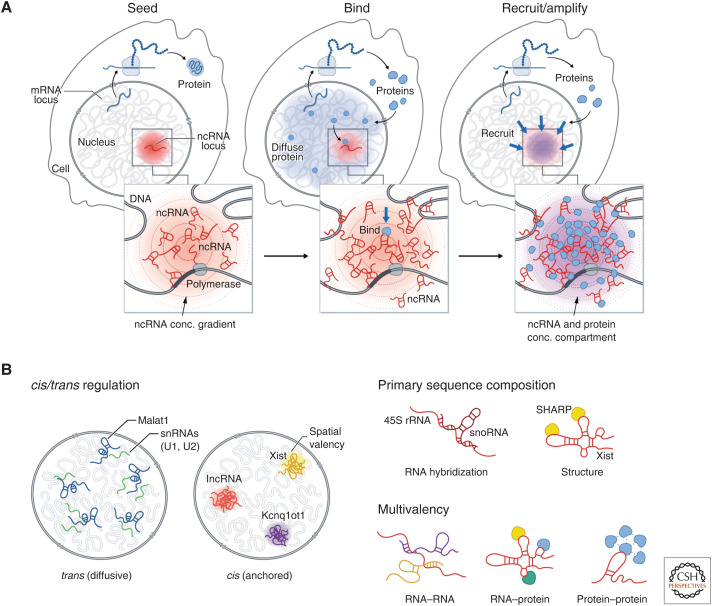Figure 5.
A general model by which noncoding RNAs (ncRNAs) may facilitate nuclear organization. (A) Seed: Because transcription creates multiple copies of an RNA species, it can achieve a high local concentration around its transcription locus to “seed” formation of an RNA-chromatin compartment. Bind: RNAs can form high-affinity binding interactions with other diffusive RNAs and proteins and recruit them into these transcriptional loci. Recruit/amplify: Bound proteins can recruit others through protein–protein interactions to form an RNA-chromatin compartment. (B) (Left) ncRNAs have distinct localization patterns in the nucleus—either diffusive (in trans) away from their transcription sites or anchored (in cis) at their transcriptional loci. (Right) RNAs can act as unique multivalent scaffolds for RNA and proteins. RNAs can bind to and recruit other RNAs or proteins via RNA hybridization or RNA–protein interactions, where RNAs fold into secondary structures and bind proteins. Because of its length, a single RNA may hybridize to more than one additional RNA and bind to multiple proteins, enabling the molecules to assemble into a higher-order RNA–protein assemblies. In addition, some RNA-binding proteins have intrinsically disordered regions that allow them to interact with multiple proteins.

